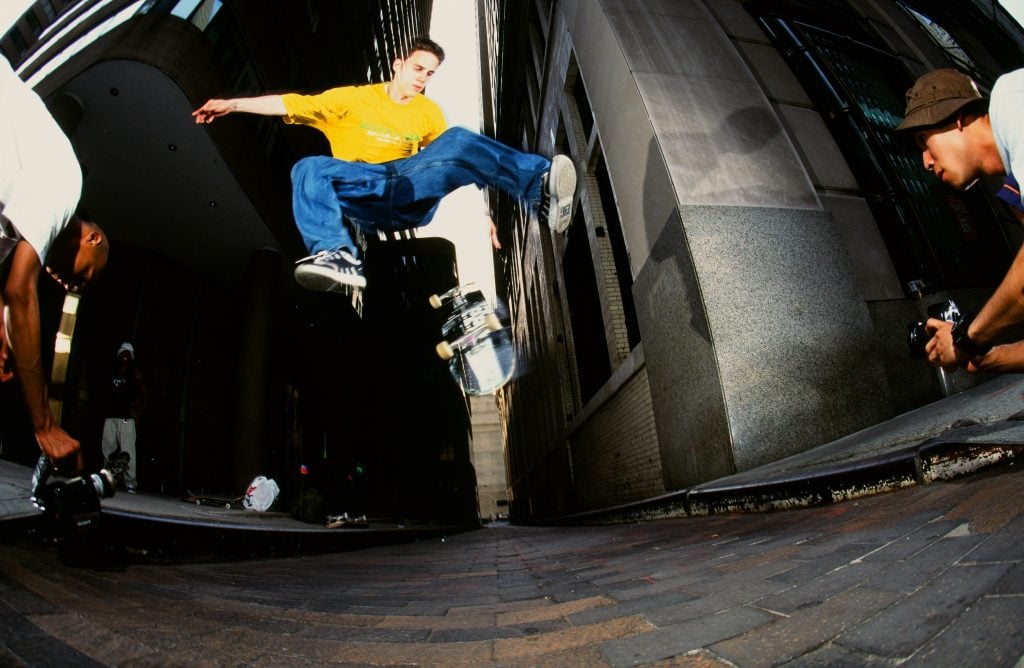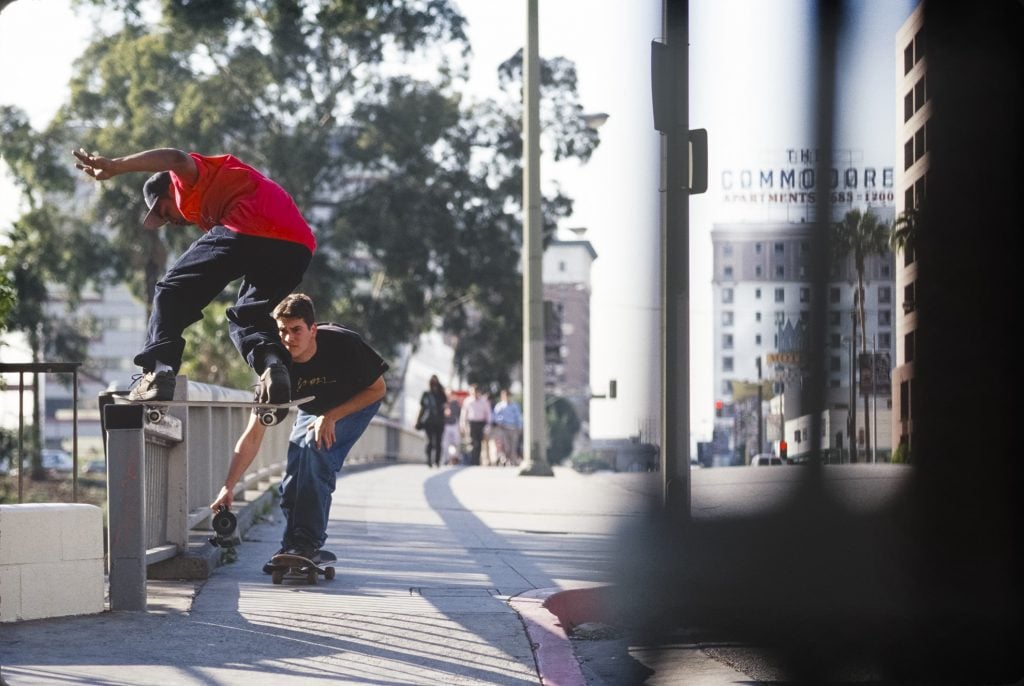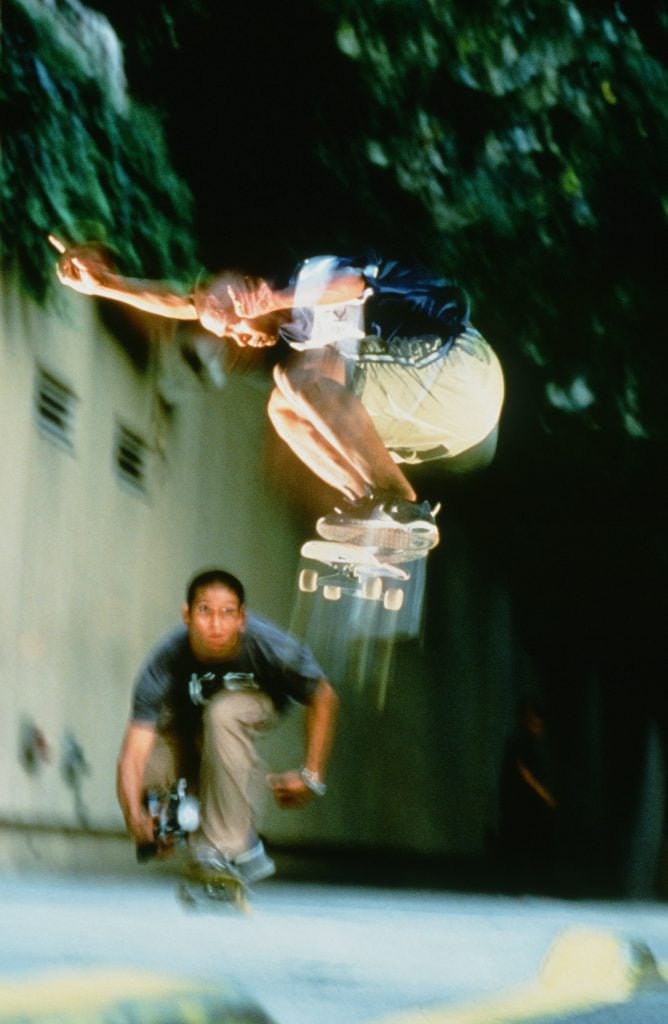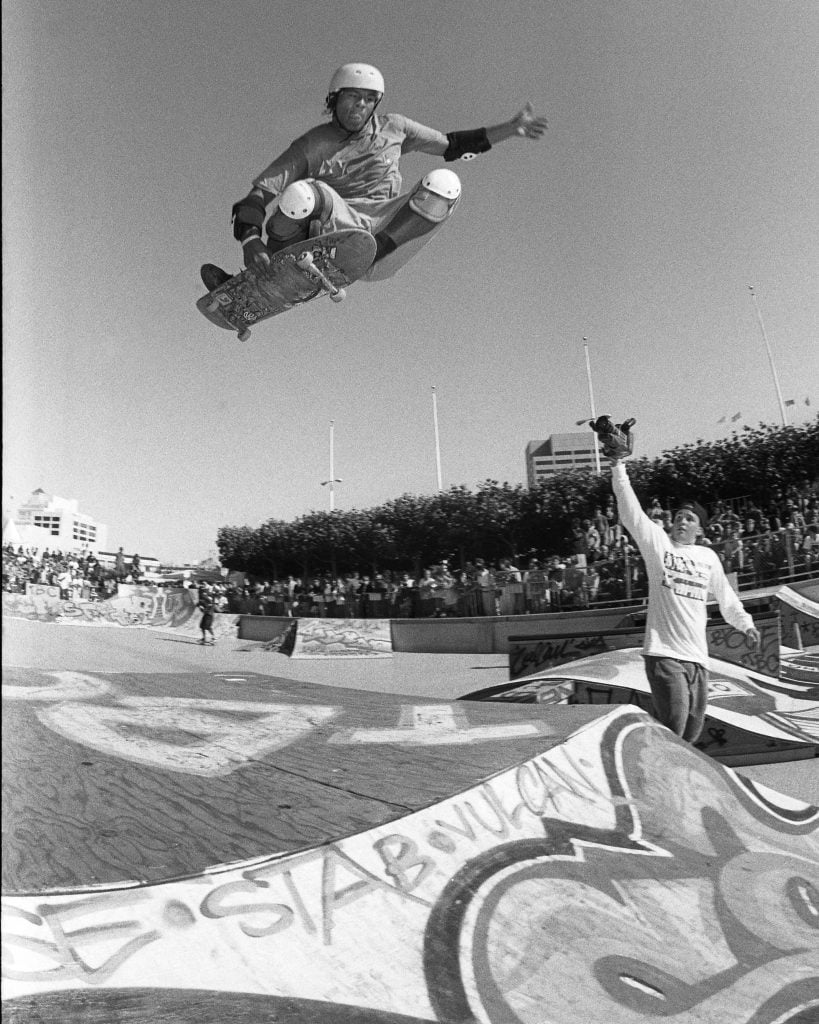Art & Exhibitions
Skateboarding’s DIY Video Era Makes Its Way Into a Museum Show
It's the first time these VHS tapes have been given the institutional treatment.

Before the GoPro and the cell phone camera, there was the handheld video recorder, and for the DIY world of skateboarding, it was a revelation.
By the late 1980s, video recorders were smaller and more affordable than ever before, and the VHS-format videos they produced were at once artful projections of a burgeoning subculture (long before its 2020 debut in the Summer Olympics) and how-to guides for aspiring skaters. Freely circulated among participants and sold in skate shops, these wobbly, roughly cut, fisheye-lens videos defined the stylings of a generation.
For the first time, the cultural, technical, and historical importance of these tapes has been placed at the center of an exhibition, taking place at the Museum of the Moving Image in Queens, New York. “Recording the Ride: The Rise of Street-Style Videos” brings together seminal examples from the late ’80s and ’90s alongside objects that tell the story.

Keenan Milton and Aaron Meza at work in 1999. Photo: courtesy Blabacphoto.
It might seem counterintuitive to gather artifacts of a cultural movement that was spontaneous and chaotic and whose proponents probably never envisioned being catalogued in a museum. But there’s plenty on offer: skateboards (affixed to the ceiling, no less), Polaroid photos shot by acclaimed photographer and filmmaker Spike Jonze, video recorders, period notes on paper scraps, and, of course, a load of tapes.

R.B. Umali and Danny Supa, 1997. Photo: Sammy Glucksman.
Such resourcefulness is, in part, due to the well-connected pair that pitched the show: Jacob Rosenberg, a West Coast filmmaker who shot video for the influential skateboarding company Plan B, and Michaela Ternasky-Holland, the daughter of Plan B founder Mike Ternasky. The hope was to curate a show around the 30th anniversary of Ternasky’s death, but the museum saw an opportunity to go bigger.
“The impact of skate videos extends beyond the skateboard community to art, fashion, sports, music, film, and more,” said Barbara Miller, the museum’s deputy director for curatorial affairs, in press materials. “With our expansive view of the moving image as a reflection and building block of vernacular culture, MoMI is the ideal cultural institution to look at the origins of this essential genre.”

Filming The Questionable Video (1992). Photo courtesy Sean Sheffey and Jacob Rosenberg.
While “Recording the Ride” features footage from a range of skateboarding groups including H-Street, World Industries, Birdhouse, 411, and Zoo York, those of Plan B feature prominently. There’s behind-the-scenes footage from Video Days (1991) and a wealth of artifacts connected to The Questionable Video (1992) and Virtual Reality (1993), which are considered formative for the genre.
One highlight is The Questionable Video, the first film Ternasky made after leaving skateboard brand H-Street. It shows some of the era’s most celebrated figures, including Rodney Mullen, Mike Carroll, and Danny Way, skating to music by the Beastie Boys, Louis Armstrong, and the Doors. As the opening montage wryly put it: “You have no idea what’s going to happen.”
“Recording the Ride: The Rise of Street-Style Videos” is on view at the Museum of the Moving Image, Queens, New York, through January 26, 2025.





